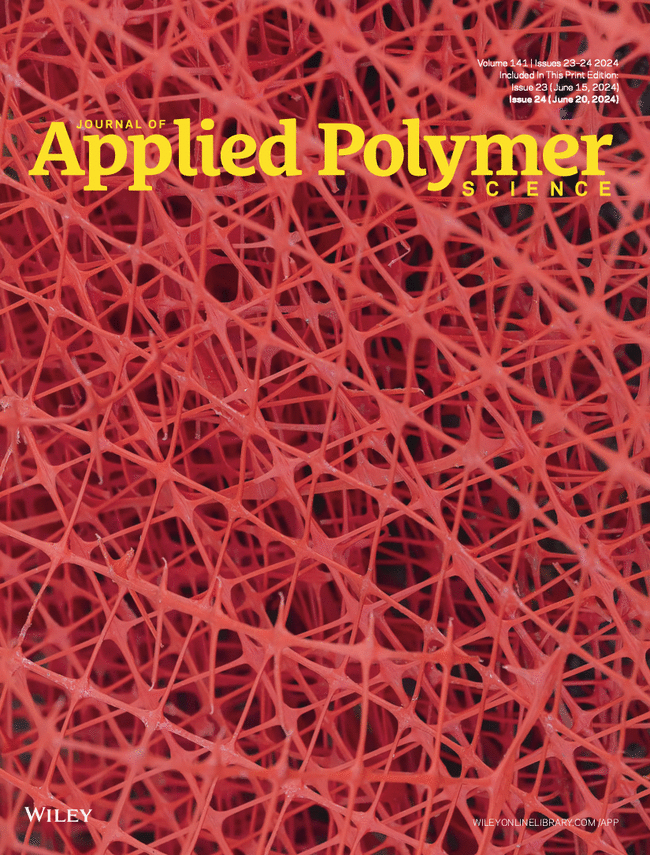P. H. Harding, J. C. Berg
求助PDF
{"title":"The adhesion promotion mechanism of organofunctional silanes","authors":"P. H. Harding, J. C. Berg","doi":"10.1002/(SICI)1097-4628(19980207)67:6<1025::AID-APP9>3.0.CO;2-K","DOIUrl":null,"url":null,"abstract":"<p>The adhesion promotion mechanism of organofunctional silanes has historically been attributed to the formation of an “interpenetrating polymer network” between a polymerized silane film and the polymer. This notion was investigated by formulating and testing two hypotheses. First, if the adhesion promotion is due to the formation of an interpenetrating polymer network, variation in the time-temperature profile of the bonding conditions should alter the extent of interdiffusion and thus interfacial strength. Second, if the adhesion promotion is due to compatibility and penetration of the silane organofunctional group, not the bulk silane film, variation in the structure of that group should change interfacial strength. Direct interfacial strength measurements using single-particle composites show that variation in the time-temperature profile of bond formation does not significantly affect interfacial strength. However, use of a series of aminofunctional silanes (with constant C : N ratio and identical surface energetics) revealed a relationship between length of the aminofunctional group and interfacial strength. These results suggest that the adhesion promotion for the system studied is controlled by compatibility and penetration of the silane organofunctional group. Whereas all of the interfaces studied here featured poly(vinyl butyral), the conclusions should apply to all amorphous polymeric materials. © 1998 John Wiley & Sons, Inc. J Appl Polym Sci 67:1025–1033, 1998</p>","PeriodicalId":183,"journal":{"name":"Journal of Applied Polymer Science","volume":"67 6","pages":"1025-1033"},"PeriodicalIF":2.8000,"publicationDate":"1998-12-07","publicationTypes":"Journal Article","fieldsOfStudy":null,"isOpenAccess":false,"openAccessPdf":"","citationCount":"45","resultStr":null,"platform":"Semanticscholar","paperid":null,"PeriodicalName":"Journal of Applied Polymer Science","FirstCategoryId":"92","ListUrlMain":"https://onlinelibrary.wiley.com/doi/10.1002/%28SICI%291097-4628%2819980207%2967%3A6%3C1025%3A%3AAID-APP9%3E3.0.CO%3B2-K","RegionNum":3,"RegionCategory":"化学","ArticlePicture":[],"TitleCN":null,"AbstractTextCN":null,"PMCID":null,"EPubDate":"","PubModel":"","JCR":"Q2","JCRName":"POLYMER SCIENCE","Score":null,"Total":0}
引用次数: 45
引用
批量引用
Abstract
The adhesion promotion mechanism of organofunctional silanes has historically been attributed to the formation of an “interpenetrating polymer network” between a polymerized silane film and the polymer. This notion was investigated by formulating and testing two hypotheses. First, if the adhesion promotion is due to the formation of an interpenetrating polymer network, variation in the time-temperature profile of the bonding conditions should alter the extent of interdiffusion and thus interfacial strength. Second, if the adhesion promotion is due to compatibility and penetration of the silane organofunctional group, not the bulk silane film, variation in the structure of that group should change interfacial strength. Direct interfacial strength measurements using single-particle composites show that variation in the time-temperature profile of bond formation does not significantly affect interfacial strength. However, use of a series of aminofunctional silanes (with constant C : N ratio and identical surface energetics) revealed a relationship between length of the aminofunctional group and interfacial strength. These results suggest that the adhesion promotion for the system studied is controlled by compatibility and penetration of the silane organofunctional group. Whereas all of the interfaces studied here featured poly(vinyl butyral), the conclusions should apply to all amorphous polymeric materials. © 1998 John Wiley & Sons, Inc. J Appl Polym Sci 67:1025–1033, 1998
有机功能硅烷的黏附促进机理
有机功能硅烷的粘附促进机制历来被认为是由于在聚合的硅烷膜和聚合物之间形成了“互穿聚合物网络”。这个概念是通过阐述和测试两个假设来研究的。首先,如果粘合促进是由于形成互穿聚合物网络,那么粘合条件的时间-温度分布的变化应该会改变相互扩散的程度,从而改变界面强度。其次,如果粘附促进是由于硅烷有机官能团的相容性和渗透,而不是由于硅烷薄膜的体积,则该官能团结构的变化应改变界面强度。使用单颗粒复合材料进行的界面强度直接测量表明,键形成的时间-温度分布的变化对界面强度没有显著影响。然而,使用一系列胺官能团硅烷(C: N比恒定,表面能量相等)揭示了氨基官能团长度与界面强度之间的关系。这些结果表明,所研究的体系的粘附促进是由硅烷有机官能团的相容性和渗透控制的。鉴于本文研究的所有界面都以聚乙烯醇丁醛为特征,该结论应适用于所有非晶态聚合物材料。©1998 John Wiley &儿子,Inc。应用化学学报(英文版),1998
本文章由计算机程序翻译,如有差异,请以英文原文为准。

 求助内容:
求助内容: 应助结果提醒方式:
应助结果提醒方式:


